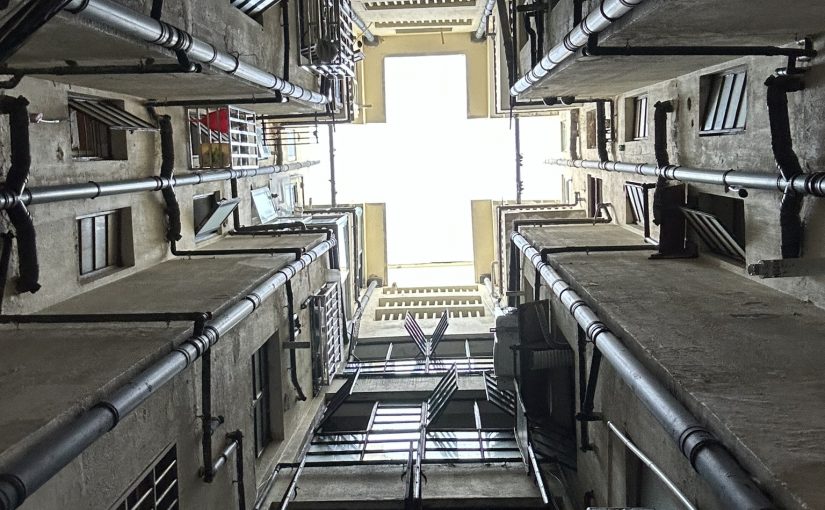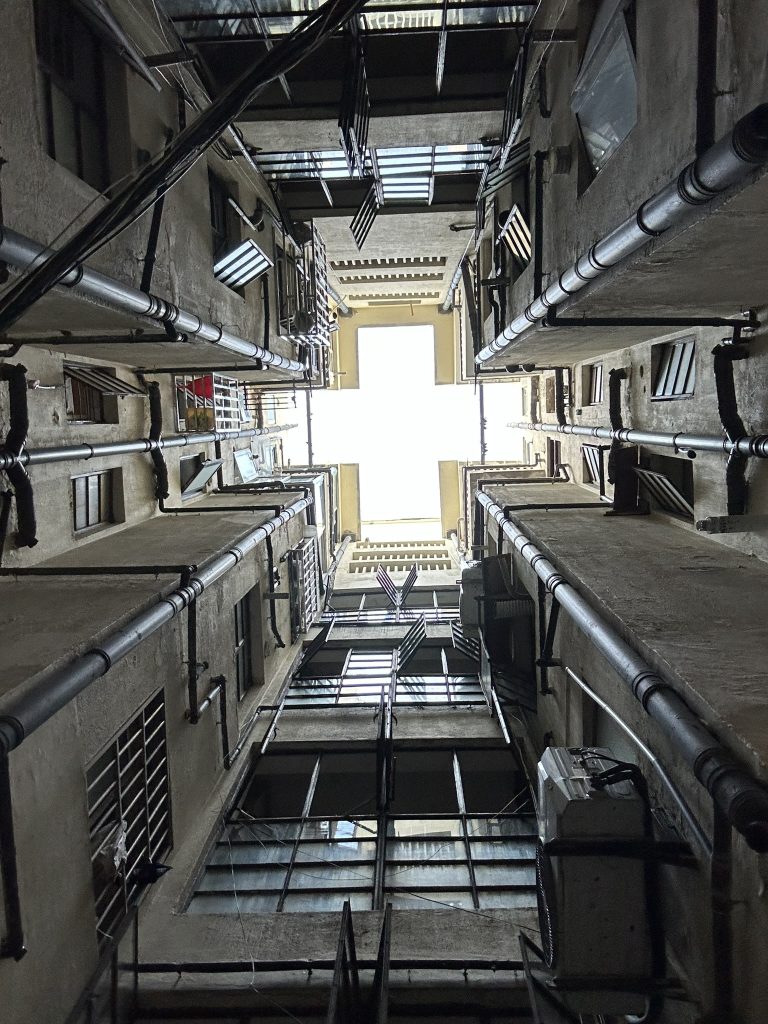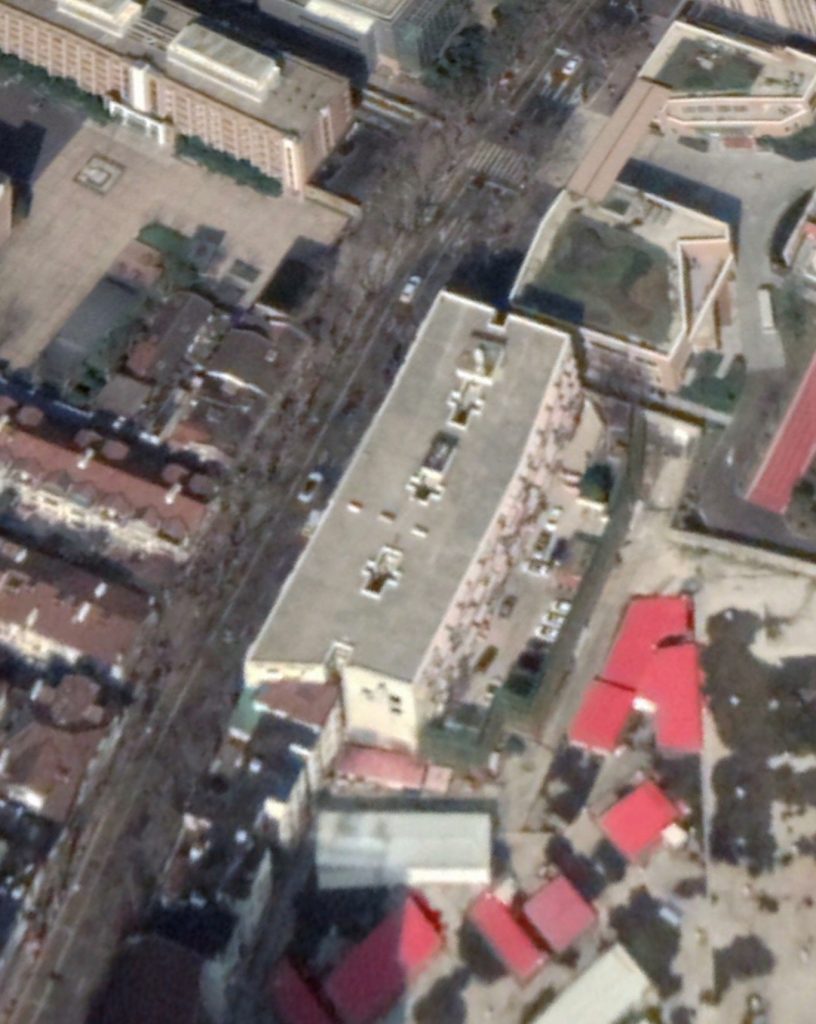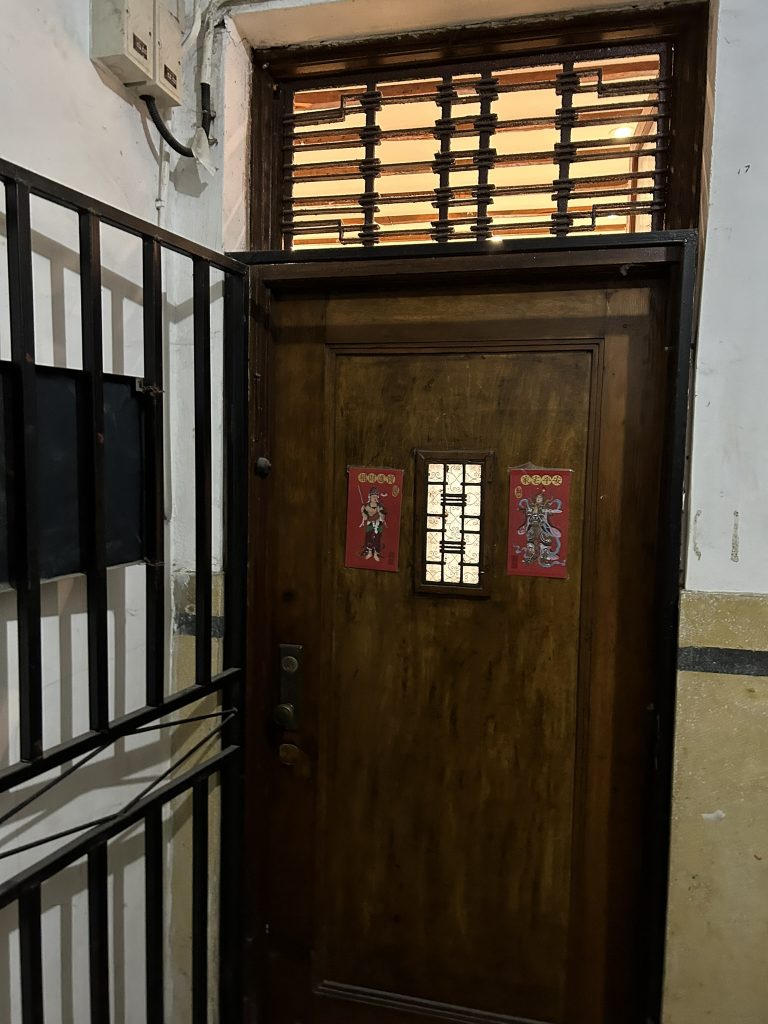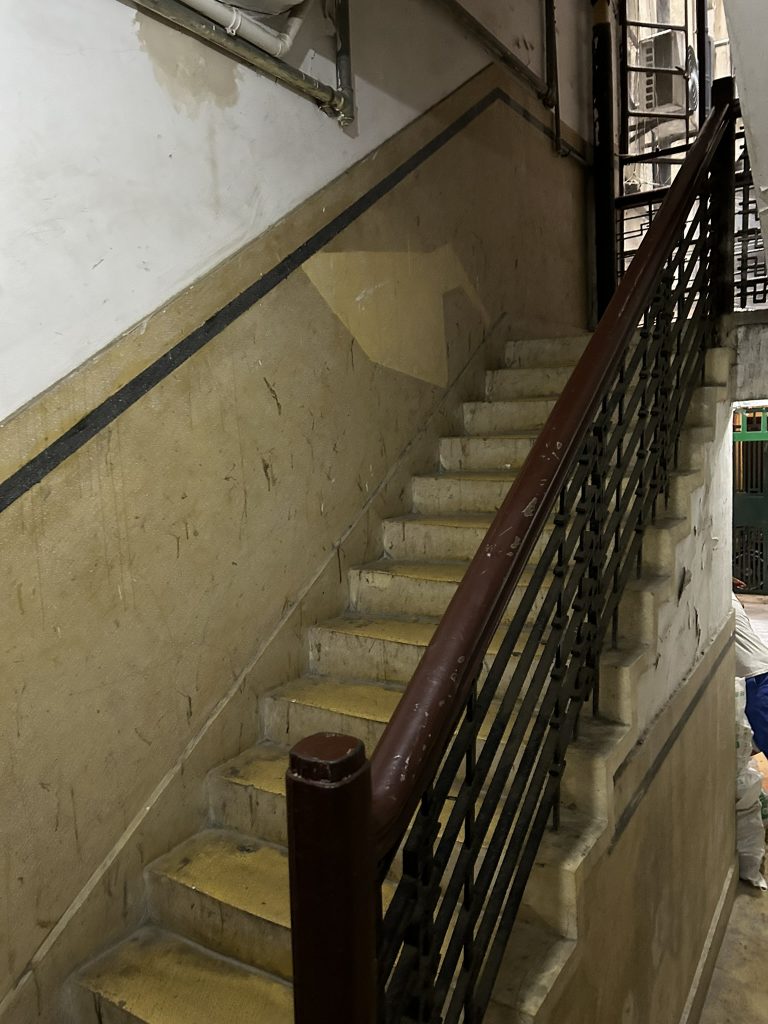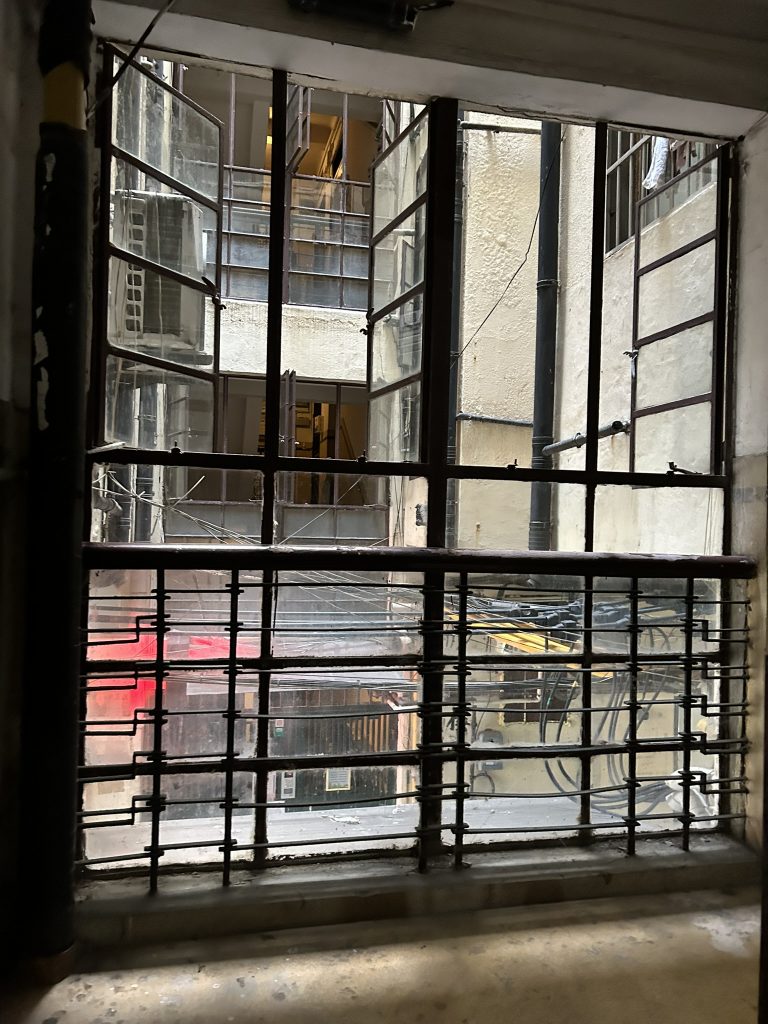The building on 143 Route des Soeurs (143 Rui Jin Yi lu) has often attracted my interest. I wrote an original post about it in 2008 (See post Brooklyn Court, Routes des Soeurs for more details). The whole area has been under reconstruction for a long time, so I went to have a look again recently, taking pictures of the inside of the building.
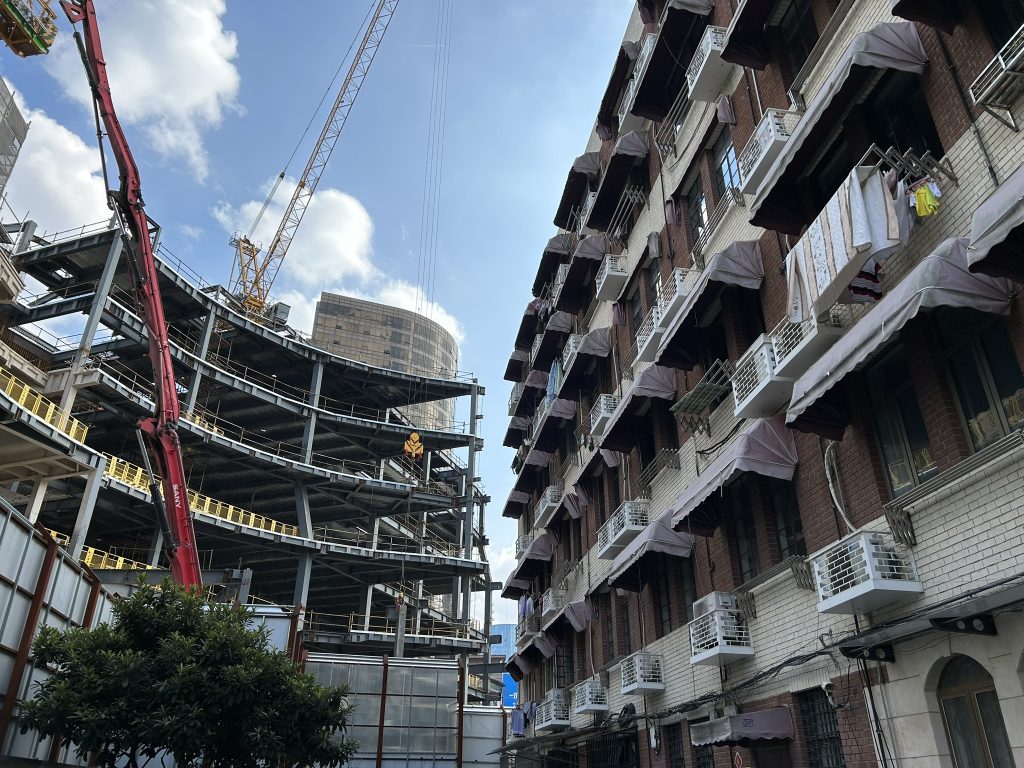
The lilong at the corner of Avenue Joffre and Route des Soeurs (today Huaihai Zhong Lu and Shaanxi bei lu) has been destroyed a number of years ago, as a metro station was built on part of it. New construction in the area has now started and no concession has been left to the history of the area, nor to aesthetic. The surrounding building kind of wraps around half of Brooklyn Court, making sure that every square inch available is used fully. The result is weird and frankly not very nice and will drastically reduce the light coming into the appartements overlooking the back side.
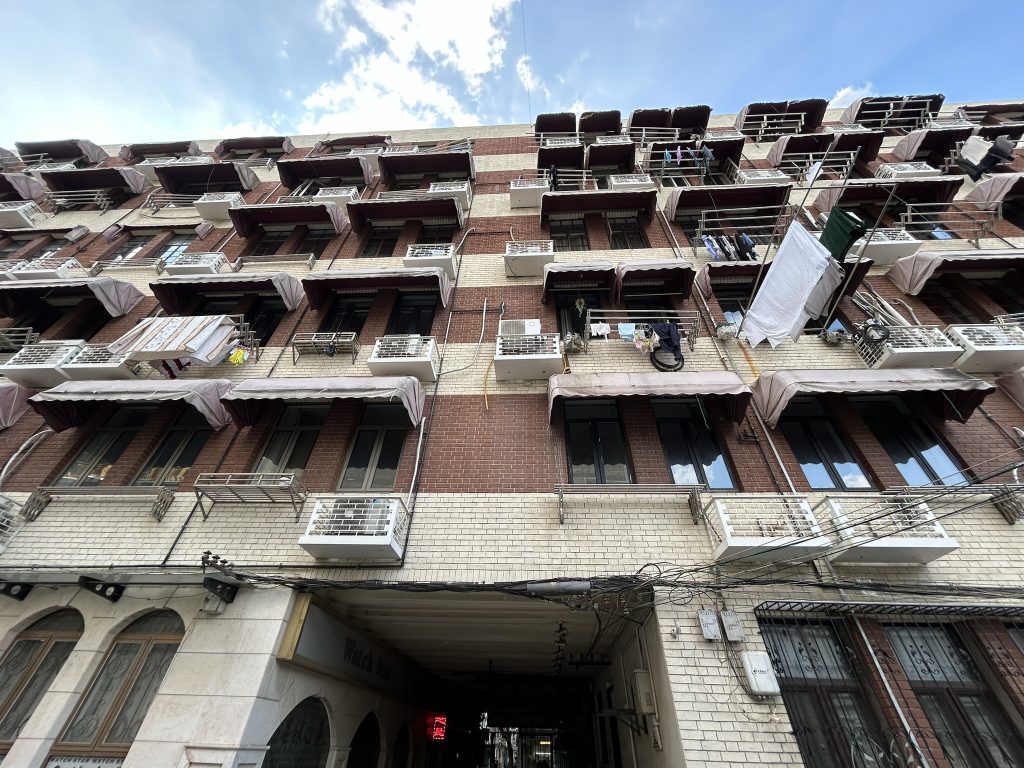
I also managed to get into Brooklyn Court, hunting for more architectural details than in my first visit. Brooklyn Court was first announced in 1931, as part of the Asia Realty (also known as ARCO) redevelopment of the lot with the adjacent Luck Terrace (now demolished, unfortunately). This was an apartment building “of a medium class”, costing 370,000 taels to build. By 1934 it is finished and occupied. The outside of the building is not particularly sophisticated.
While entering in the building, one of the first sight is the large cross-shaped light wells. It is very disctinctive, while bringing a lot of light to this dark passage. Their shape is so specific that they can be seen from the sky like on below picture (right picture by Matthias Guillin).
Although Brooklyn Court was only “of medium class”, it is clearly marked by his time with inside decoration. Art Deco was the style of the time, and it really shows in the iron work for windows and doors which are really unique in Shanghai.
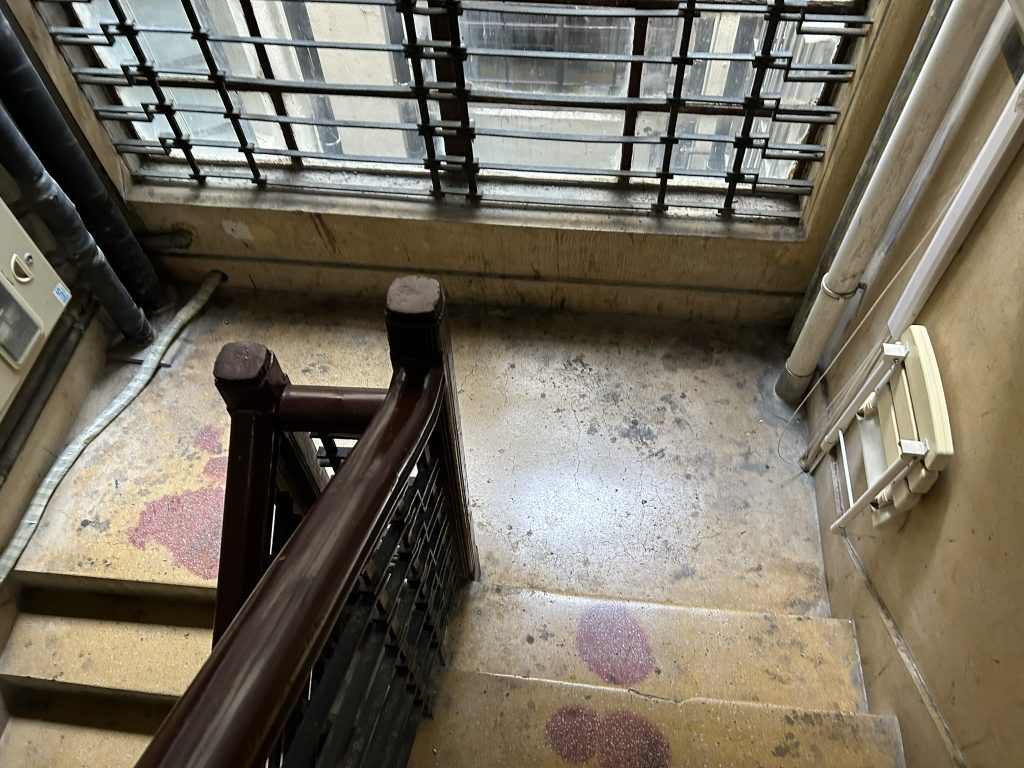
ARCO’s architects at the time of construction (1931 – 1933) were listed as J. A. Hammerschmidt & F. Schäffer.
– Josef Alois Hammerschmidt was an Austria architect born in Vienna in 1891. He studied at the Technische Hochschule in Vienna, was captured during WW1 and sent to Siberia. After the war, he worked in Tianjin, part of the time with Rolf Geyling, reaching Shanghai in 1931.
– Férenc Schäffer was a Hungarian architect, trained in Budapest and also taken to Siberia as a war prisonner. He reached Shanghai in 1920, were in probably first work with Lászlo Hudec in the office of American architect Rowland A Curry. During his time in Siberia, he met a fellow Hungarian, Sandor Hugo who later became ARCO’s General Manager including at the time of construction of Brooklyn Court.
This is probably through this Austro-Hungarian connection that Hammerschmidt was brought to ARCO in 1931. A few years early, ARCO already headed by Sandor Hugo had hired Lászlo Hudec’s new firm for a development project in 1925-26. The little communitee of Hungarian architects in Shanghai also included art deco star Karoly Gonda (designer of the Cathay Cinema among many others), Béla Mátrai and Janos Komor who designed the Lester Institute in Hongkou district.
